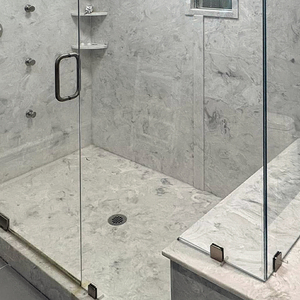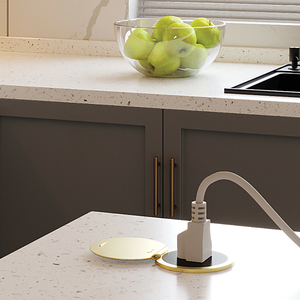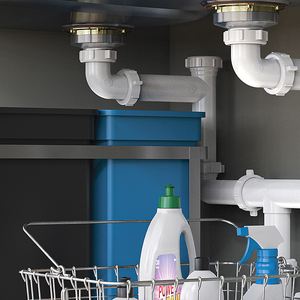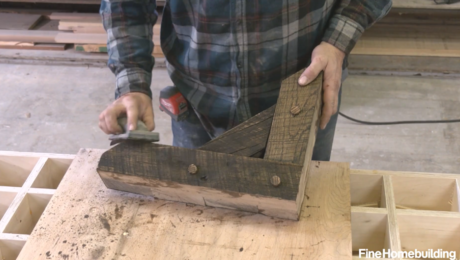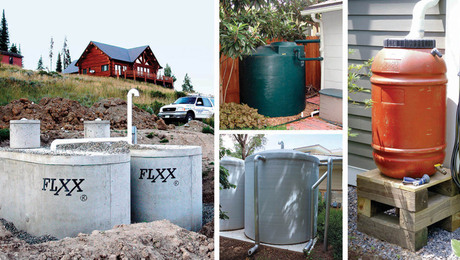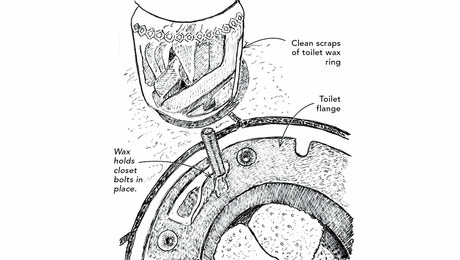Replacing a Kitchen Sink – Part 1: How to Install Faucets and Drains
Now that the fixtures are on the sink, see how to lay it into position, seal the edges, and connect the waste and water lines.
Fit the sink to the countertop
All new sinks should come with a template for cutting the hole in the countertop that the sink will drop into. The template will also show how wide the lip of the sink is, to help you plan the clearance you will need around the hole. Use the template to lay out the hole, and then cut it with a circular saw or a jig saw.
Install the fixtures before you install the sink
It can be difficult to fit and tighten down the drain, faucet, and any other fixtures, if the sink is already attached to the cabinet. To minimize time spent crawling under the sink, attach everything you can before you drop the sink into place. Use beads of plumbers’ putty to seal where fixtures meet the surface of the sink. After the faucet and drain are in place, attach the water lines that will connect to the water-shut-off valves inside the cabinet. Sink water lines usually have rubber o-rings so you shouldn’t need to add any teflon tape or sealant to the fittings — just thread them on, and tighten them down.
Watch part 2 of this series to see Bruce complete the sink installation.
More videos and articles by Bruce Norman
Replace a Sink Trap
Learn a simple and professional technique for replacing a sink trap, along with tips for proper venting
Video: Build Like a Pro: Replace a Sink Trap
In this Build Like a Pro video, Bruce Norman explains how to rebuild your entire sink trap assembly and make it the best plumbing in the house.
Video: Build Like a Pro: How to Make Basic PEX Connections
Plumber Bruce Norman demonstrates how to connect PEX components with a push-fit fitting or a clamp ring
Video: How to Make Basic PEX Connections
A plumber demonstrates how to connect PEX components with a push-fit fitting or a clamp ring


